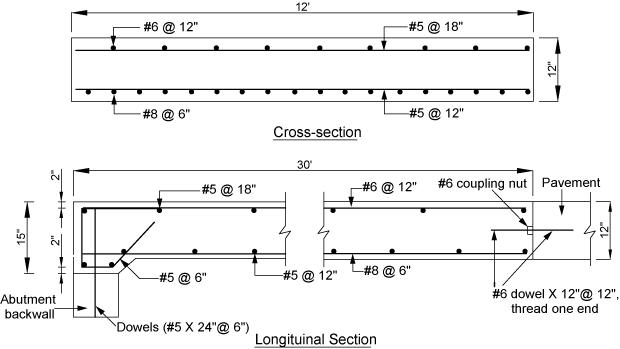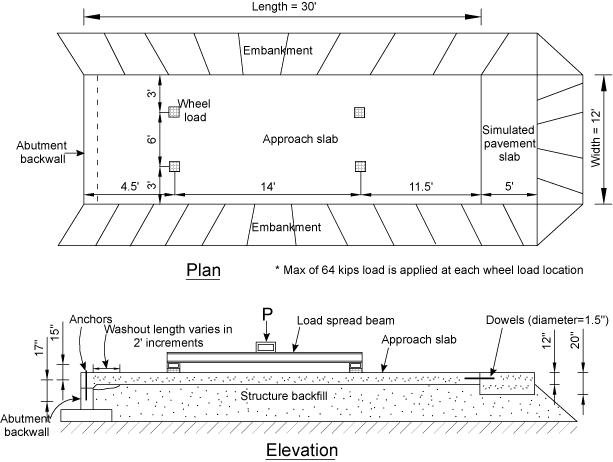Funded by the California Department of Transportation. Investigators – Y. H. Chai, Stanley Y. T. Chen and Garry H. J. Hung (UC Davis), Saad El-Azazy & Jim Gutierrez (Caltrans), Hans Strandgaard (CH2M Hill), and Chris Dumlao (FRP Specialist, Pleasanton, CA).
Consolidation of underlying natural foundation soil, compressive deformation of fill materials and erosion of approach embankment often result in significant differential settlement between the bridge structure and approach pavement. The differential settlement, commonly called “the bump and the end of the bridge”, was estimated to affect about 150,000 bridges in the US. The settlement leads to uneven road surface and deteriorates the ride comfort of the traveling public. Approach slabs are commonly used to mitigate the uneven surface by enabling smoother transition between the roadway and bridge deck. The approach slab also serves to reduce the dynamic load imposed by heavy trucks on the bridge.
Current construction of approach slabs relies on cast-in-place reinforced concrete slabs with dowel anchorage into the abutment or threaded rod and nut system into the bridge deck. Although there is no uniform design of the approach slab across the US, unsatisfactory performance of approach slabs has nonetheless been reported in many states. Factors contributing to unsatisfactory performance of approach slabs include (i) time-dependent consolidation of the natural soil under the embankment and/or fill material due to inadequate compaction, (ii) poor drainage behind the bridge abutment resulting in erosion of the fill material and void formation under the approach slab, (iii) longitudinal and vertical translation as well as rotation of the abutment causing localized damage at the connection of the approach slab. Distress in the approach slab often manifests itself in the form of transverse and/or longitudinal cracks, which tend to decrease the service life of the approach slab and increase the maintenance/repair costs of the structure. In California alone, nearly $8 million was expended on replacement or retrofit of approach slabs in 2004. Although a damaged approach slab is typically replaced by an in-situ reinforced concrete slab of similar details, other replacement options exist including precast concrete slabs or prefabricated fiber reinforced polymer (FRP) decks. In this project, prefabricated FRP decks as well as FRP gridforms and rebars are investigated as replacement options. Full-size (12 ft wide by 30 ft long and 12 inches thick) approach slabs are tested under simulated wheel loads up to 4 times HS20 truck loads. Performance of the approach slabs are examined under simulated washout conditions.
| (a) Typical California details for approach slabs |
| (b) Approach slab test setup |
For construction photos of the approach slab project, click here

